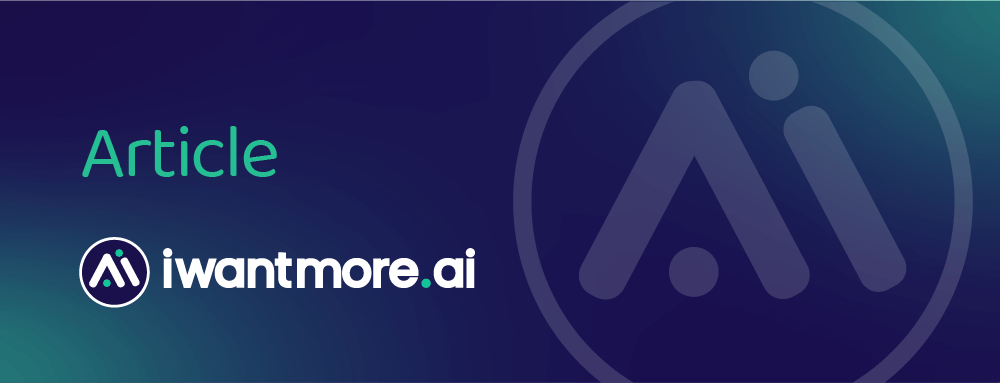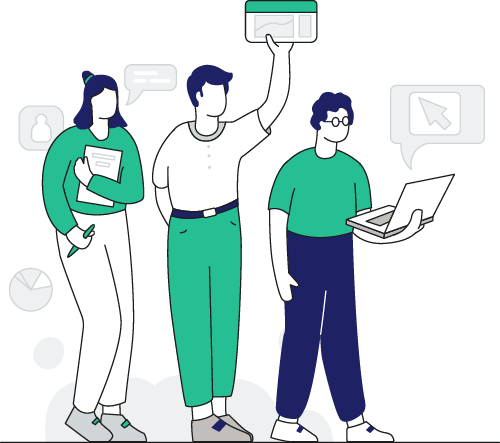
Is using AI cheating?
At iwantmore.ai, we help businesses navigate the world of AI. One of the persisting challenges we see is the perception by some people that using AI is ‘cheating.’ Despite AI’s proven advantages, some professionals still feel uneasy about embracing it leading to a culture where employees secretly use AI tools to avoid judgment.
Why is there a stigma around AI?
The resistance to AI mirrors past technological advancements. When calculators were introduced, teachers worried they would weaken maths skills. Similarly, spellcheckers and grammar tools faced scepticism before becoming standard. AI is on the same trajectory, yet some employees still fear that using AI makes them appear less competent.
A recent Slack study revealed that nearly 50% of employees worry they will be perceived as lazy or less capable if they use AI. This fear can create an unhealthy workplace culture where employees hide AI usage instead of using it for productivity gains.
The psychology behind the AI ‘cheating’ mindset
Why do some senior leaders and decision-makers resist AI? Several psychological factors contribute to this perception:
- Technophobia: Discomfort with new technology, often due to lack of familiarity.
- Fear of obsolescence: Worry that AI will devalue experience or replace jobs.
- Perceived loss of control: Leaders may feel AI undermines traditional decision-making.
- Generational divide: Older professionals may be less familiar with digital tools, leading to scepticism.
These factors contribute to a workplace culture where employees conceal their AI usage instead of openly adopting it as a valuable tool.
The problem with hiding AI usage
Aside from the obvious governance and security issues of unsanctioned AI use, employees who use AI in secret miss out on collaboration and best practice sharing. Businesses that fail to normalise AI adoption risk falling behind competitors who integrate AI effectively. Instead of resisting AI, companies should try to create a culture of transparency and innovation.
How businesses can remove the AI stigma
To help employees embrace AI without fear, businesses should:
- Lead by example: Senior leaders should openly use and endorse AI tools.
- Encourage open discussions: Create a culture where AI use is discussed and normalised.
- Invest in AI training: Equip employees with the skills and confidence to use AI effectively.
- Set clear guidelines: Define acceptable AI usage to prevent ethical concerns and misuse.
AI is an asset
AI is designed to enhance productivity, just like calculators, grammar checkers, and automation tools before it. It should be seen as an asset that enables employees to focus on higher-value work.
At iwantmore.ai, we help businesses integrate AI responsibly, ensuring teams feel empowered rather than threatened.
We are iwantmore.ai – an AI consulting firm who specialise in delivering AI strategy and AI training courses to small and medium-sized businesses. Contact us for a free no obligation conversation about how we can help your business.
Interested in more content like this? Sign up to our Newsletter here.
Other AI articles you may be interested in:

At iwantmore.ai, we help businesses navigate the world of AI. One of the persisting challenges we see is the perception by some people that using AI is 'cheating.' Despite AI’s proven advantages, some professionals still feel uneasy about embracing it leading to a culture where employees secretly use AI tools to avoid judgment.

Every company seems to want to use AI. According to Cisco’s second annual AI readiness report, 98% of executives felt an increased urgency to deliver on AI. Many businesses are already implementing it in some way, but based on the findings of the RAND report, more than 80% of AI projects fail.

Every few days, a new AI model seems to drop from one of the big AI companies. But as a normal person, how do you work out whether a new AI model is actually better than what you were using before? In this article we look at ways in which you can test out which model is most applicable for your business needs.

From boardrooms to marketing teams, leaders in businesses are being told they need AI to stay competitive. But amid the hype and noise, one crucial question often gets overlooked - what’s the actual return on investment (ROI)? Is it all worth the effort?

We take a look at the various ChatGPT modules and find out which ones best suited for what business tasks. We look at GPT-4o, GPT-4o Mini, GPT-4, OpenAI o1, OpenAI o1 Mini, OpenAI o1 Pro Mode, OpenAI o3 Mini and look at what they are best for, their purpose and how you access these models.

There’s still some confusion as to what an AI agent actually is. In many cases it’s probably still just simple automation with a fancy name. But at the more sophisticated end of the spectrum, these autonomous systems have the potential to change the way businesses operate.
iwantmore.ai – The AI consulting firm that helps you build a smarter business
Wherever you are with your AI implementation initiatives, we have a range of stand-alone AI quick start services to help you fast track the transformative benefits of AI across your business.



